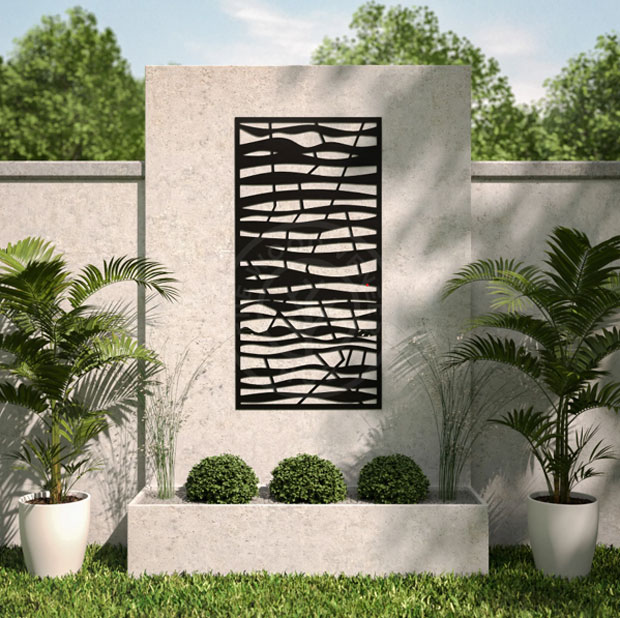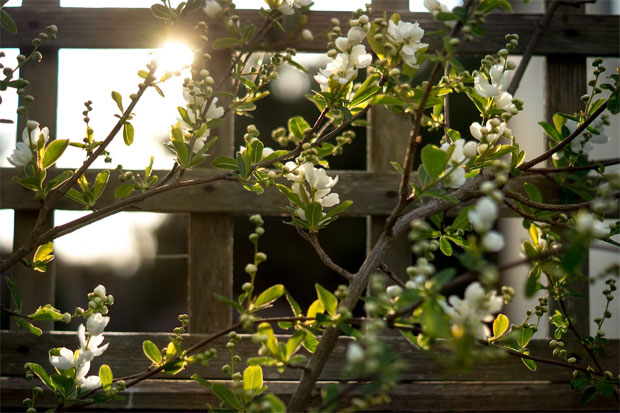Creative Ways to Use Garden Screens in Your Outdoor Space

Creative Ways to Use Garden Screens in Your Outdoor Space in 2023
As summer is fast approaching, more people are taking steps to transform their outdoor spaces from typical gardens to serene outdoor havens. One trend that is capturing people’s attention is garden screens, which have emerged as an innovative solution to transform outdoor spaces. These in-demand screens, including a motorized patio screen, add points of visual interest to your space and give you much-needed privacy.

Types of Gardens Screens to Consider
If you’re considering installing garden screens, you’re truly spoiled for choice as there are several different types available to purchase:
- Wooden screens
One of the most popular options is wooden screens. It’s easy to see why wooden screens are in high demand—they appeal to those aiming for an organic, natural feel. But that’s not the only benefit of wooden screens. They are available to purchase in a variety of wood types, including cedar, pine, bamboo and willow, meaning they’ll look right at home in a rustic-themed garden.
The beauty of wooden screens is that they can be used in so many ways. For example, you can install them above a garden wall to give your plot a little more privacy or hide seating areas behind slatted fences that have the dual benefit of letting strips of light in. If you’re feeling creative, why not opt for a moveable wooden screen with wheels on the bottom? That way, you can move the screen around your garden as and when you need it. Innovation at its finest!
- Metal screens
But not everyone wants a traditional, rustic garden. Metal screens are ideal if you’re hoping to create a modern outdoor space. There are plenty of metal screen options to choose from, such as aluminium, corten steel and stainless steel screens, all of which are highly durable and virtually maintenance-free. Unleash your creativity with minimalist geometric patterns or opt for a more sophisticated laser-cut design to give your garden instant visual appeal.
- Living screens
For those keen to embrace nature as much as possible, living screens are perfect. If this option is appealing to you, there are a few ways you can make it happen. For example, you can grow climbing plants, such as jasmine or honeysuckle, on standard wooden screens, such as trellises. Alternatively, you can purchase dense hedge screens to transform your garden into a refuge for yourself and local wildlife.

Garden Screen Design and Installation Advice
Now that we’ve explored a few of the many garden screen types available let’s look at the best ways to install them in your garden:
- Consider materials
Selecting the right garden screen depends on the theme you’ve chosen for your garden. For example, if you’re a fan of traditional garden design, you may prefer a wooden trellis because it has that natural, earthy feel that you love. Alternatively, if you’re into modern design, a laser-cut metal screen adorned with geometric shapes might be more your style. It’s all up to you!
- Think about functionality
Visual appeal is all well and good, but your garden screens must also be functional. Does your garden desperately need privacy or perhaps something to shelter your seating area from the wind? Alternatively, are you planning to divide your garden into different zones, but not at the expense of light and pretty views? Make sure to consider all these factors when choosing your garden screen to ensure the option you choose meets your functionality requirements.
- DIY vs professional installation
Depending on the type of screen (or screens) you purchase and your level of DIY skill, you might be able to install them yourself. However, if you’ve got any doubt about your capabilities, consider hiring an expert to do it for you.
If you’re going to have a go at installing the screens yourself, here’s a step-by-step guide to help you do it right:
- Measure the panel width and mark the position for the posts on the ground, then dig deep enough holes to hold a third of the length of your posts, as this will support the weight of the screen.
- Insert posts into the holes, pour in the concrete and mix with water. However, consult the screen manufacturer’s instructions first, as they may advise using ready-mixed concrete instead.
- Use a spirit level to check the posts are straight and measure top to bottom to check they’re the same height—wonky posts will do nothing for your garden’s visual appeal!
- Backfill the holes with dirt.
- Drill holes in the inner sides of the posts and attach the screen using screws. The brackets sit at the back of the screen (usually with two on each side) to hold the panel in place.
Final Thoughts
Installing garden screens allows you to transform your garden into a sanctuary of your own design, a place where you can relax and unwind after a long day. Garden screens provide multiple benefits, including aesthetic appeal, privacy and shelter from the elements, making them the perfect solution for your outdoor space.
Guest Article. Contains a sponsored link.

Guest Author Luke Goodman:
As the Marketing Manager for The Wood Veneer Hub, Luke is passionate about interior design and helping consumers, businesses and large scale projects find innovative and sustainable solutions to their building issues. He prides himself on staying up to date with the latest trends and is never afraid to push the boundaries of design.




